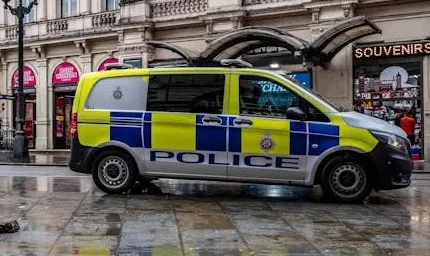Government to deploy 10 more live facial recognition vans despite rights groups warning of abuse
The UK government is dramatically expanding its use of live facial recognition (LFR) technology, funding 10 new camera-equipped police vans to be shared across seven forces in England. The rollout, announced by the Home Office, aims to track down suspects wanted for crimes including sexual offences, violent assaults, and homicides — but civil liberties campaigners warn it represents a dangerous step toward mass surveillance.
The new vehicles will double the number of LFR vans currently in use. Greater Manchester, West Yorkshire, Bedfordshire, Surrey, Sussex, Thames Valley, and Hampshire Police will share the new units, which are fitted with cameras capable of scanning passersby’s faces and matching them against a database of wanted individuals.
The government says the technology has already proven effective in London, where it contributed to 580 arrests in the past year, including 52 registered sex offenders who had breached their conditions. Home Secretary Yvette Cooper defended the expansion, calling it “a targeted way to identify sex offenders or people wanted for the most serious crimes who the police have not been able to find.”
Live facial recognition first appeared in England and Wales in 2017 at the UEFA Champions League final in Cardiff. Since then, it has been trialled mainly in South Wales, London, and Essex, sometimes deployed at major events such as a Beyoncé concert to scan for paedophiles and terrorists.
The technology works by measuring key facial features — such as the distance between the eyes and the length of the jawline — and comparing them against a pre-set “watchlist”. Each van will carry a trained officer to manually verify matches before any action is taken.
Embed from Getty ImagesAlongside the rollout, the government has launched a public consultation on safeguards to “ensure transparency and public confidence” ahead of introducing a new legal framework for facial recognition use. Critics say such protections should already be in place before expanding the technology further.
Rebecca Vincent, interim director of Big Brother Watch, accused the police of exploiting a lack of explicit legislation: “They have interpreted the absence of any legislative basis authorising the use of this intrusive technology as carte blanche to continue to roll it out unfettered.” The group, alongside Shaun Thompson — who was wrongly identified by LFR — is mounting a legal challenge against the Metropolitan Police’s use of the system.
Charlie Whelton from Liberty echoed those concerns: “There’s no reasonable excuse to be putting even more cameras on our streets before the public have had their say and legislation is brought in to protect all of us.”
The Home Office insists the system is accurate and unbiased. Independent tests by the National Physical Laboratory found “no bias for ethnicity, age or gender” at the police settings. Chief Superintendent Tim Morgan of South Wales Police said the force was committed to using new technology “ethically” and in line with legislation and guidance.
The Police Federation of England and Wales, representing rank-and-file officers, called for comprehensive training to accompany the technology, especially amid what it described as an “unprecedented officer retention crisis.”
In a related announcement, the Home Office said it had fulfilled a manifesto pledge to provide a named, contactable officer for every neighbourhood in England and Wales. Residents can now find their local officer through police force websites, with a commitment to respond to queries within 72 hours.
Despite the government’s assurances, rights groups remain deeply sceptical. With a pending judicial review on the legality of live facial recognition, they argue this rapid expansion risks embedding an unregulated mass surveillance tool into everyday policing.
